Yamaha Champions Riding School [Video]
Riding a motorcycle well is difficult. No matter how much experience we have, we never stop learning about riding. The joy and fulfillment from educating one’s self in proper motorcycle control is a lifelong pursuit that’s constantly evolving. And while you could try and go at it alone through the school of hard knocks, it’s much easier, cheaper and especially safer to have someone teach correct technique in a controlled environment.
This is Nick Ienatsch’s goal with the Yamaha Champions Riding School. Ienatsch and his hand-picked team of instructors — all of whom have won championships in this sport — strive to make every student become a better rider. This is my story.
Fair warning, though: this is not like other riding school stories you might have heard, even ones about this very school. Heck, even I’ve done one of those before. I’ve been to the YCRS, sat in the chairs and looked up to Nick, Ken Hill, Shane Turpin, Dale Kieffer and Mark Schellenger, absorbed what they had to say and wrote about it. This time the tables were turned. Quite literally.
“You’ve been to the school before, why don’t you come back and try instructing?” asks Nick. It was an opportunity I couldn’t refuse. To maximize my experience, I chose to attend a three-day school. The first reason was, clearly, to get as much seat time as possible, but also to try and hone my teaching skills. I’ve never instructed before, at least not formally, so having the three days would help me better understand what I needed to do to help the students.
Upon arrival at Miller Motorsports Park in Tooele, Utah, one of two tracks the school splits its time at — the other being Las Vegas Motor Speedway during the winter months — Nick and his team had everything under control. My job would be easy. Just ride and help where needed. Fair enough.
As Nick went around the room introducing the instructors, I felt a bit of intimidation. These are guys I’ve looked up to. Sure, I’ve won races and at the time of the school was leading a class championship at Miller’s club racing series (which my teammate and I eventually won), but when Nick introduced me as an instructor I almost felt embarrassed. As if that wasn’t enough to put me in my place, the next guest instructor introduced to the class was none other than the Mr. Daytona himself, 1993 World Superbike champion Scott Russell. Despite each instructor’s resume, they all took me in with delight and were excited to have me on the team.
Like most schools, YCRS splits its time between the classroom and the track, though here the definition of “classroom” is a little different. Besides the actual classroom where each day’s lesson starts, instructors will pull their group aside anywhere on a safe part of the track and start addressing them if necessary. With each class capped at around 20 students, the personal attention given to each student is high.
Ienatsch starts the classroom portion of the day with some basic principles that get repeated throughout the school. These range from why people crash to barriers that hold riders back, and in one way or another they all revolve around fear. Think of the YCRS, then, as a fear management course which helps riders better understand the dynamics behind motorcycle physics. This understanding in turn reduces each rider’s fear and helps enable them to become a more competent rider on the track and especially on the street.
Being the Yamaha Champions Riding School, the default motorcycle provided to each student is a YZF-R6, but a R6S, FZ6R and FZ8 are also available. For bigger folks, the FZ1 and YZF-R1 are also up for grabs, and the instructors actually encourage the students to try all the bikes at some point during the school to drive home the point that proper technique applies regardless of motorcycle. In special circumstances, students are allowed to bring their own motorcycle, provided it’s a Yamaha.
Day 1
Each student fills out an application during registration that, among other things, asks what level of riding the student thinks they’re at. This helps the instructors break them into groups. Surprisingly this process became much easier now that the school has been around a few years as opposed to when I first came here as a student. The reason is because “about half of the students are return customers,” Nick says. “That really speaks to the quality of the program we’ve put together here.” Still, that leaves the other half to suss out, and this, according to Ken Hill, is the most difficult part of the day, as I would soon discover.
For the first track session of the school, the drill is to work on basic fundamentals taught during the morning’s classroom session. Each instructor would lead his group around the track, increasing the pace slightly while demonstrating proper apexes and vision, all the while keeping an eye on their students in the mirrors. Inevitably, one of them falls behind while the pack continues. This is where I came in.
Riding at a pace they felt comfortable with, I rounded up the struggling students and continued the drill. As the school went on, it was obvious one particular student, Alex, (whose last name I’m withholding at his request) would receive the most personal attention from me. This return student confessed to me his desire to break bad habits he’d formed since the last visit to the school and he wanted to work on his body position. Easy enough.
The first bad habit to break was his use of the brake — he wasn’t using any. Ienatsch and his team teach that brakes are the only control used to monitor speed, not single-gear exercises or drills done only at a certain speed. Go as fast as you want and use the brakes to control speed. Instead, Alex would go at a pace where he felt comfortable simply coasting to help him set up for a corner. The brake light hardly came on.
Alex was looking directly in front of him as he rode instead of keeping his eyes up and scanning the road ahead. And because he didn’t know what was coming next, his speed was appropriately timid in order to react. The simple act of raising his eye level helped him gain confidence in going faster, but he was still struggling to understand the power harnessed at the brake lever. To help him better understand, I arranged for him to ride pillion with Shane Turpin on the school’s FZ1, paying special attention when Shane applies the throttle and brake. Alex soaked up this advice like a sponge, leaving ego at the door and taking to heart as much instruction as he could.
In general, the majority of the class had a similar outlook on the school and their egos. I found it interesting that, with this particular class, which varied in age from teenager to senior citizens (with similar disparity in skill levels), I found that the younger students were receptive and open to constructive criticism while some of the more experienced students made excuses for not performing as well as they felt they should have.
Before lunch each student does a complete lap while an instructor follows and records the lap on video. This not only gives quick feedback to the student, but allows everyone else to possibly learn a thing or two themselves. The class then watches each video during the lunch break, and afterwards it’s back to the track to work on mistakes made in the video. Being a three-day school the curriculum is covered in a slightly more relaxed pace, giving ample time for each student to work on their progress.
Day 2
To mix things up a bit, and to get students out of their comfort zone, the second day of class is held on Miller’s West track (as opposed to the East track the first day). It’s a much more flowing layout with high-speed, open corners compared to the East track’s slow, technical makeup. This is done on purpose so students don’t rely on muscle memory from the previous day but instead are forced to put the lessons about proper vision, lines, apexes and speed control to use. But first, each morning starts with a van ride with an instructor highlighting important parts of each turn and what you should be doing on the motorcycle when you get there.
These van rides aren’t leisurely, either. Packed 12-15 people deep sometimes, Nick and Ken drive these two Ford Econovans hard. Really hard. It’s full throttle from the word go, followed by hard brakes at the last possible moment and tires squealing the whole time. To date, none of the vans have been rolled, but if you ask some of the students they’ll surely tell you they’ve come close. But the point of driving the vans like this isn’t to scare the students — Nick and Ken are mimicking the controls of a motorcycle and replacing lean angle with steering wheel input. Put under that context, the lessons start to make sense.
The day’s track sessions in the morning continue where things left off on day one. My student, Alex, had remembered to keep his eyes up, now it was a matter of getting his body in the right position and making him comfortable increasing speed. Much of the issues Alex struggled with are common, especially with newer riders: Eyes not scanning far enough, death grip on the bars, and feet in the wrong position on the pegs. All of which are easy things to remedy – if you know you’re doing it wrong. Aex worked to correct these issues, and his riding improved dramatically.
But he wasn’t the only one I worked with. Nick Perkins was a fast trackday rider who had signed up for his first race the weekend following the school. He had decent speed but hit a plateau. “At this point, the only people faster than me at trackdays were racers, so I decided to start racing.”
All it took to assess his problem areas was a single lap around the track. Nick’s body positioning needed some minor tweaks in order to make him feel more comfortable on the bike. The simple act of moving his foot on the footpeg half an inch and placing his heel on the heel guard freed the rest of his body to open up. Suddenly he could get his knees out, which opened a pocket for his arms when he leaned over. His riding improved dramatically with that one adjustment. “It was like a light bulb went on in my head,” Perkins said. “It felt so much better. So natural.”
Drills on the second day build upon those from the day before. Three important ones that I still use today are the braking drill, “Pointy End of the Cone” drill, and the “Look But Don’t Follow” drill.
The braking drill is quite simple. The class moves away from the track and onto the large parking lot area beside it. Here, the instructors show students just how powerful the brakes are on modern sportbikes, both front and rear. Then the class tries it for themselves. The key is not only to control the amount of nose dive, but also to control the rate at which it returns.
In the “Pointy End of the Cone” drill, instructors are stationed along various corners on the track. Here, they lay a cone (sometimes two, or even three) on its side somewhere along the radius of the turn and students are required to ride past the narrow end of the cone. A scenario where this would be useful is on your favorite twisty road. One you’ve ridden several times before. You know how fast to take each turn and could even do it blindfolded (don’t). Only today, someone’s tire blew and the tire carcass is lying right in your normal line. With this drill, if a rider is scanning far enough ahead, they can spot the cone (or carcass in our example) with plenty of time to adjust their line and get around it. Like all of the exercises at the school, the benefits of this drill are useful both on the track and the street.
At the end of the second day, when students have a firm understanding of what they should be doing, the instructors again test their pupils’ retention with the “Look, But Don’t Follow” drill. In contrast to the first day, when the instructors led students around demonstrating proper technique, lines and form, this time around the students are told to follow the instructors — who intentionally make mistakes — but to continue riding the correct line. This really challenges the student’s scanning ability, as the ones who have trouble here inevitably copy the instructor’s mistakes.
Day 3
The three-day schools normally take advantage of Miller’s go-kart track and use the four-wheelers to help drive home the relationship between throttle and brake. The karts are only equipped with rear brakes, so proper application of them is required to prevent spinning. Unfortunately, the kart track was unavailable to us this time around, so we resorted instead to the fleet of Ford Focus cars used for Miller’s teen driving schools. While not exactly the same as a go-kart, it still served as a useful tool as the instructors took students around the track, demonstrating throttle and brake application, as well as proper scanning. Putting students behind the wheel and having them replicate what the instructor was doing with real-time feedback from the instructor sitting shotgun served as an eye-opening experience. This was evident in both their faces and their riding.
With two solid days of riding under everyone’s belts, we returned to the East track for the final day. Here, finer details of riding like suspension setup are covered, something not normally done in a two-day school. Here, the motorcycle’s suspension is set to one extreme of its adjustment and the student is told to ride a few laps, using all the lessons learned from the past two days. Each time they came in the previous setting would be returned to normal and another would be thrown out of whack and the student would be sent back out. This continued for a few laps until the full range of suspension settings were exhausted. As instructors, we knew the drills of the previous days were working as the students would start to identify how and why the bike was reacting with the wonky suspension.
After a few more drills, the tail end of the day is spent lapping. Proper technique is stressed because students are usually worn out from the past two days and fatigue is often a catalyst for mistakes. As I was riding around observing everyone, the improvement in everyone’s riding was clear. All the students looked more relaxed and were focusing on their perceived problem areas. My personal student, Alex, had also made big strides. His comfort level was visibly higher, which led to increased speed on the track.
Personally, the teaching experience improved my riding too. While I was technically serving an instructor role, Nick and the gang wasted no time critiquing my riding, too. The class was a good refresher course for areas I struggled with, but trying to convey messages to students in a way they could understand it helped me better grasp the enormous task Nick, Ken, Shane, Dale and Mark are faced with each school.
The Yamaha Champions Riding School isn’t cheap — two-day schools start at $2295, add $1100 for the third day — but the adage “you get what you pay for” certainly applies here. Simply put, Nick and his team understand and teach what works. Whether you’re trying to qualify for a national-level race or you simply want to make it home with less stress after a Sunday morning ride, the YCRS will get you there.
Veronica Tsai, one of the growing number of female students at the school, capped it best when she said, “It’s one thing to ride fast, but it’s another to be able to teach. These guys do both really well.”
Check out http://www.yamahachampionsridingschool.com/ for more information.
More by Troy Siahaan




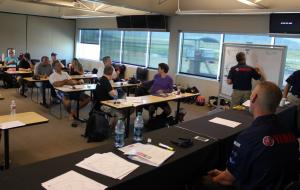















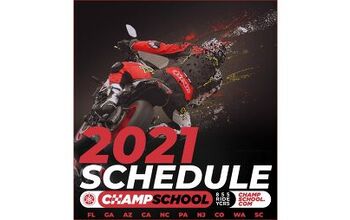

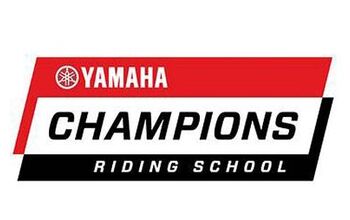
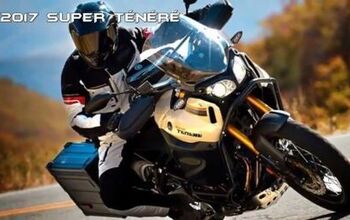
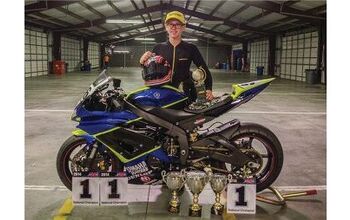



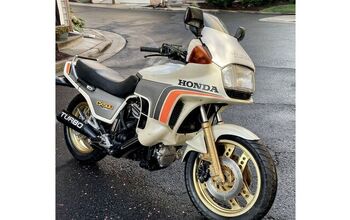




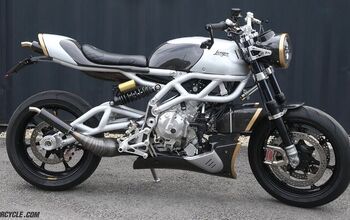




Comments
Join the conversation